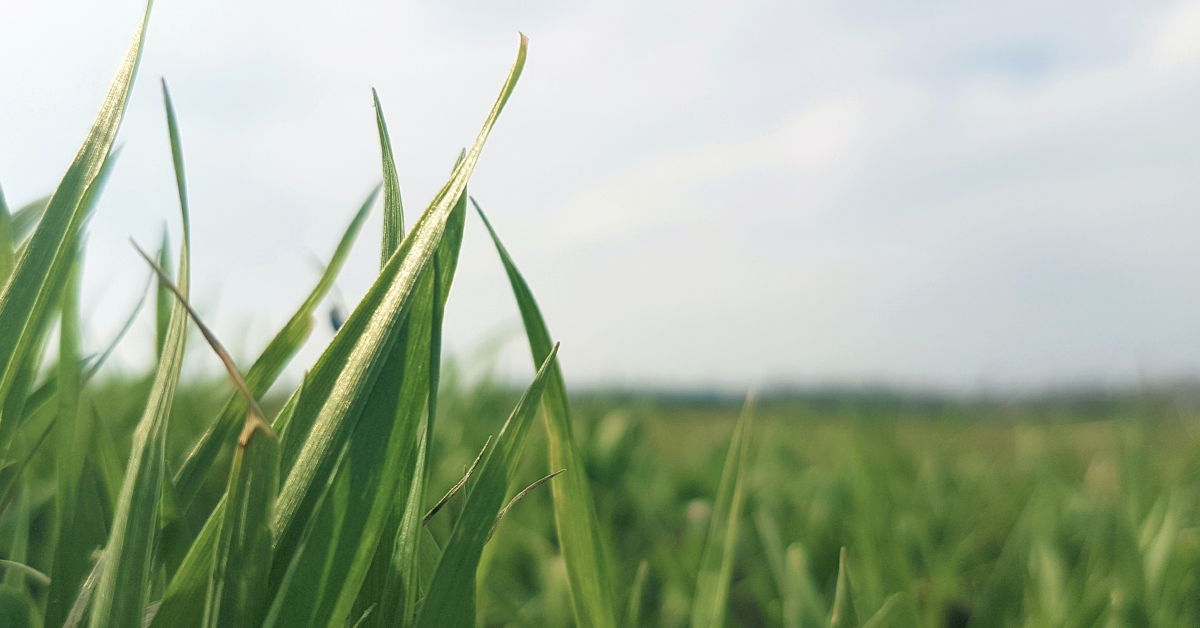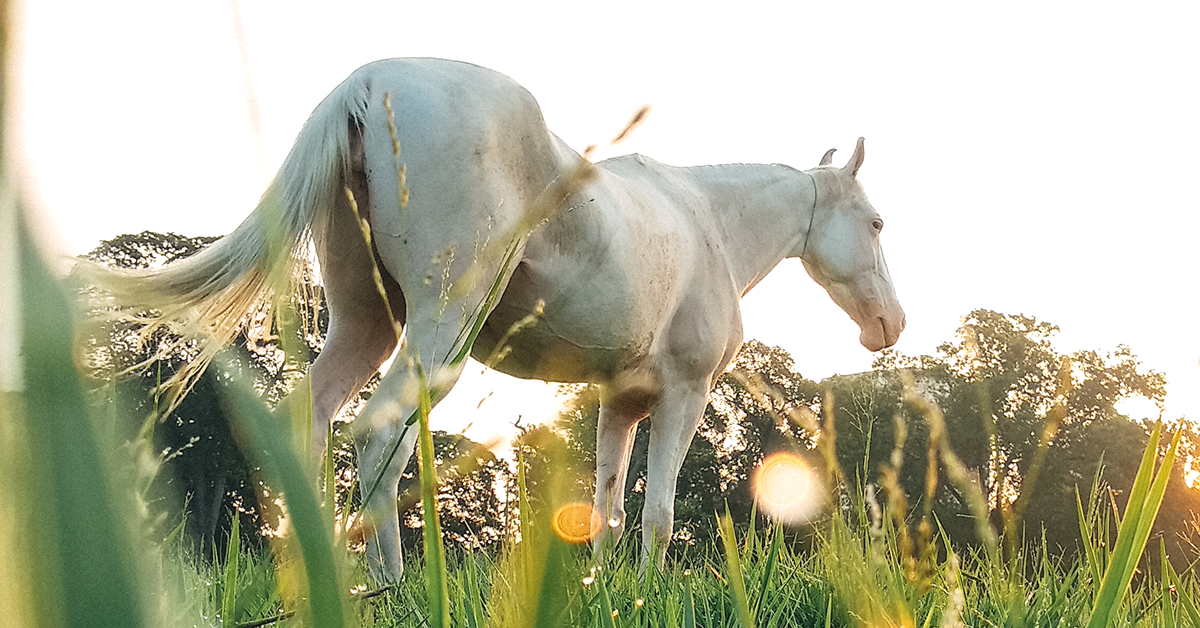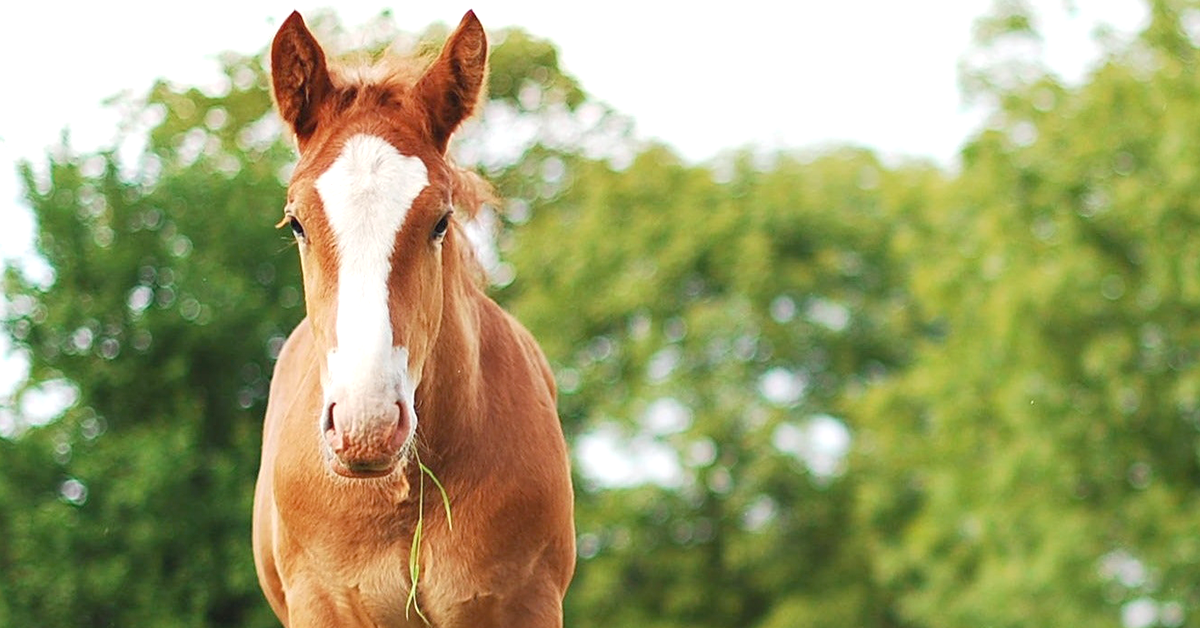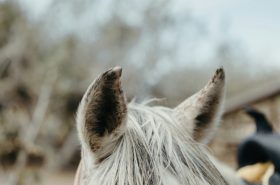It’s finally spring and I know my horses, for one, are happy. I’m tapering off their winter supply of hay as well as the senior feed as they graze the growing green grass. We know that all horses love spring grass, but unfortunately, it can also be harmful in some cases. Let’s dive into a few spring grazing guidelines.

Spring Grass Facts
Remember that thing called photosynthesis that we learned about in middle school science class? It’s the process where plants make sugar—also known as nonstructural carbohydrates, or NSCs—using sunlight, water, and nutrients from the soil. This means that sugar is plentiful in grass, but certain types of grasses store more sugar than others.
Aside from being higher in sugar, lush spring grass is also higher in moisture content (75-85%), and it is about 50% higher in energy and protein when compared to later growth in the season. It’s important to note that drought and soil nutrient deficiencies can stress grass, causing it to store more sugar than usual. Likewise, when the nighttime temperature falls below 40 degrees F, the grass will retain high levels of NSCs throughout the day.
Precautions with Metabolic Horses
High NSC levels can spell trouble for horses with metabolic problems such as insulin resistance or Cushing’s disease. Therefore, these horses may need to be kept off of spring pastures for the most part or wear a grazing muzzle when they do graze. However, about 12 weeks into spring, the NSC levels in grass tend to decrease, making it safer for some of these horses to graze.

Other Cautions with Spring Grass
Horses without metabolic problems that are kept on pasture year-round usually don’t have too much trouble adjusting to new spring grass. However, those that have been kept in a dry lot or mostly stalled for the winter may experience problems if you turn them out onto lush, green pasture without letting them acclimate to it slowly.
If horses are moved to spring grass too quickly, they may experience the following problems:
- Overeating, which can lead to obesity
- Diarrhea due to the high moisture content
- Colic due to rapid changes in the gut microbial population
- Laminitis
As with making any type of feed change with horses, it’s important to transition to spring grass slowly. Continue to feed hay in the meantime as they make the switch.

Love this blog post? We think you will enjoy How to Use a Grazing Muzzle by Casie Bazay or Dealing With Spring Showers by Emily Fought.



